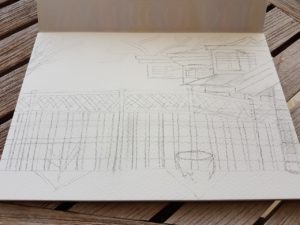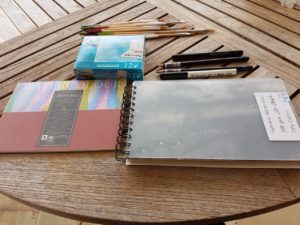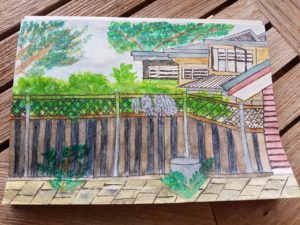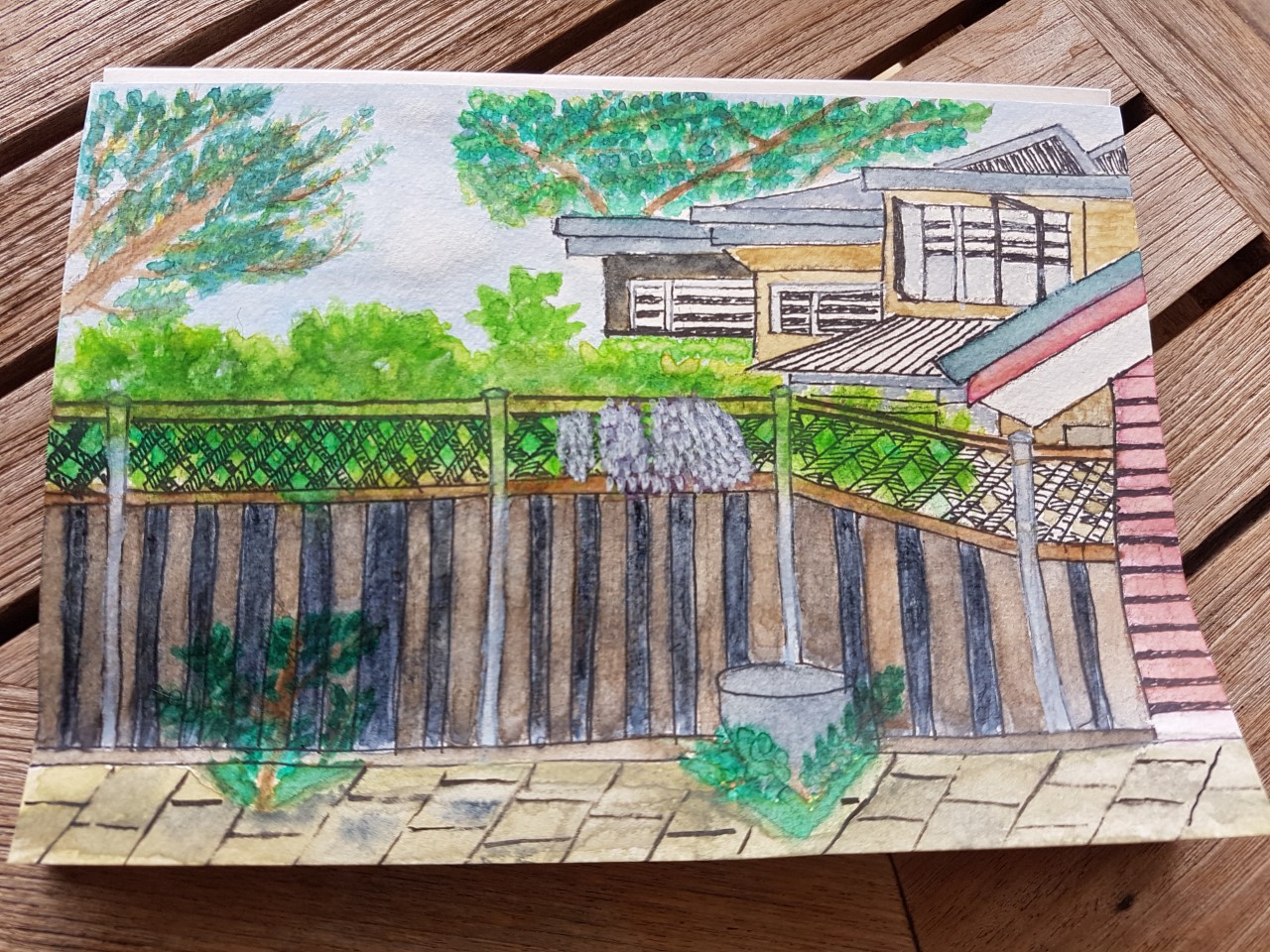When I mention urban sketching, what comes to your mind? I have been fascinated with urban sketching and water colouring since I read about Janice McLeod’s hobby as a water colourist in her memoir Paris Letters. She goes around Paris and sketch, filling her drawings with water colour. The result is awesome. She also opens an etsy shop online and sells her water colouring as a package in the form of personalised letters, despite having to print the original as this effort takes too much time. I have been drawn by her sketches and when she published ‘A Year in Paris’ which is part journal memoir and part travelogue, she incorporates her water coloured sketches in it. This is a book I’d like to possess and in all honesty, I’m still waiting for the price of the hardback to be reduced. Alternatively, I’d be happy with a paperback copy if it is to be published at all. In short, urban sketching simply means sketching a scene or a building or even a landscape in urban areas.

The idea of urban sketching came to fruition when I came across an advertisement featuring a one day workshop entitled How to Start a Travel Journal which involved sketching. I have been toying with the idea of attending but decided against it since there are many online courses for free or cheaper. A second occasion that drove me to take up this cathartic hobby is when I came across three people who were involved in urban sketching at Manly. I thought maybe this is something I should dabble in too.

So yesterday, I bought some necessities like water colour, brushes, water colour paper and sketching pens and pencils. Many a time, I used my intuition to get the things, a much needed skill when one is a beginner.
Today, I attempted my first sketch and water coloring and dare I say I’m satisfied and proud of my first attempt.


Here are the things I’ve learnt about urban sketching:
- It is hard to draw straight asymmetrical lines.
Drawing straight asymmetrical lines takes practice. I have learnt to steady my hand and use knowledge of approximation while doing this.
2. It is a challenge to choose a frame and stick to it.
To put your drawing on paper is indeed tough due to scale. Again this takes practice as this is based on one’s perception.
3. Mixing colours can be intuitive.
Having just 12 colours is indeed insufficient to project similar colours in reality. I had to draw on recall from what I learnt in school ages ago and common sense to mix colours to say, form purple or gray green. It can be fun mixing colours to see what you’ll come up with.
4. Use of brush can be tricky
Using the correct brush can be really tricky. Different brushes are used for different effects. I’ve learnt that the flat ones are good for colouring broad lines while the fine tipped ones are good for colouring small leaves.
5. Be daring
Last of all, I’ve learnt to just give things a go. You’ll never know what you can come up with. If the effect is one what you want, let the colour dry up and then give it fresh strokes using a different shade. It usually works.
The gist of it is to practise, practise, practise. I’m looking forward to another attempt at sketching and colouring.
2nd attempt: a cafe
3rd attempt: at the Entrance
4th attempt: an iconic scene in the city
Follow me on my urban sketching journey…
P.S. If you are a pro, I’m happy to gather some tips from you.

